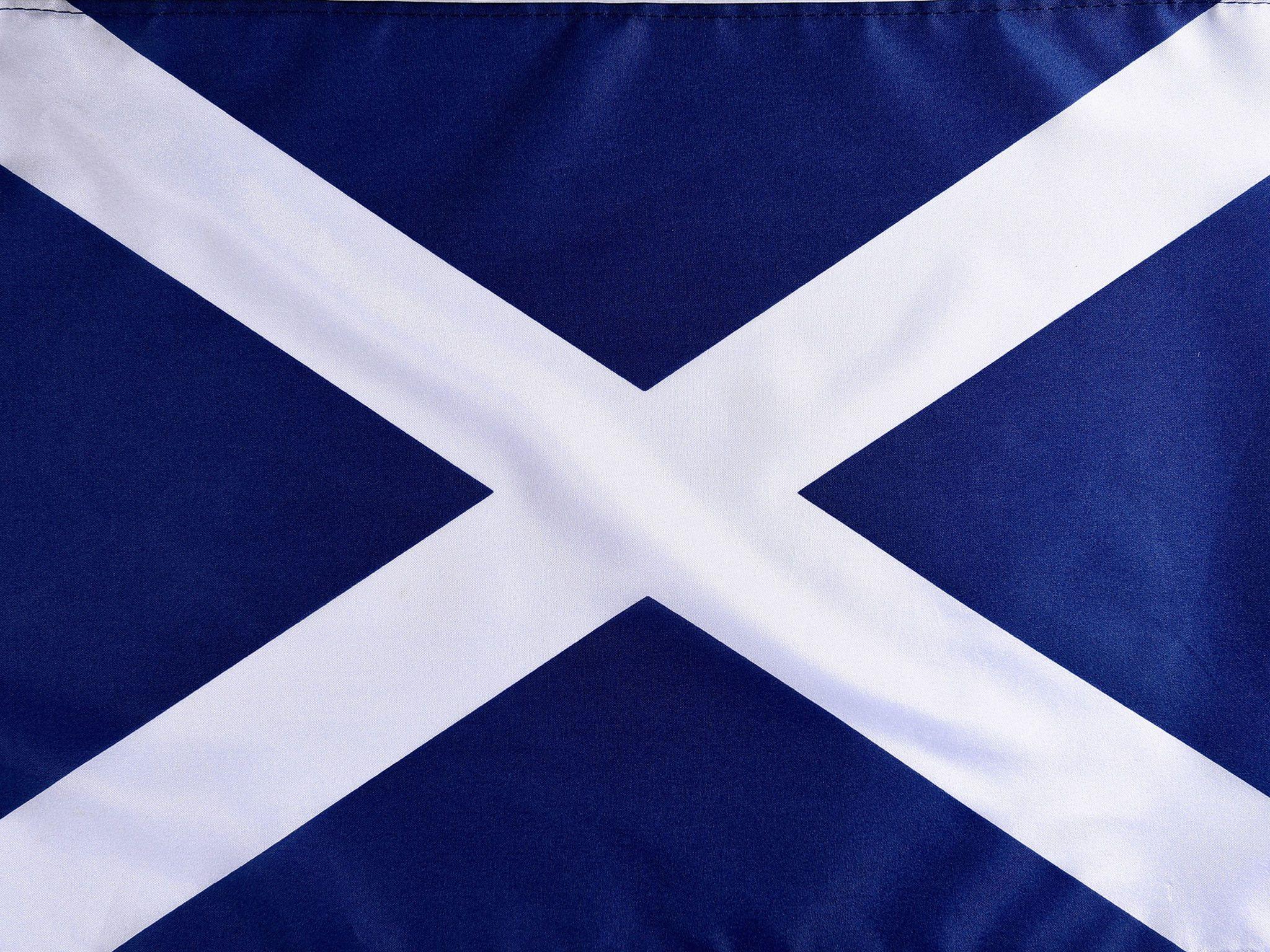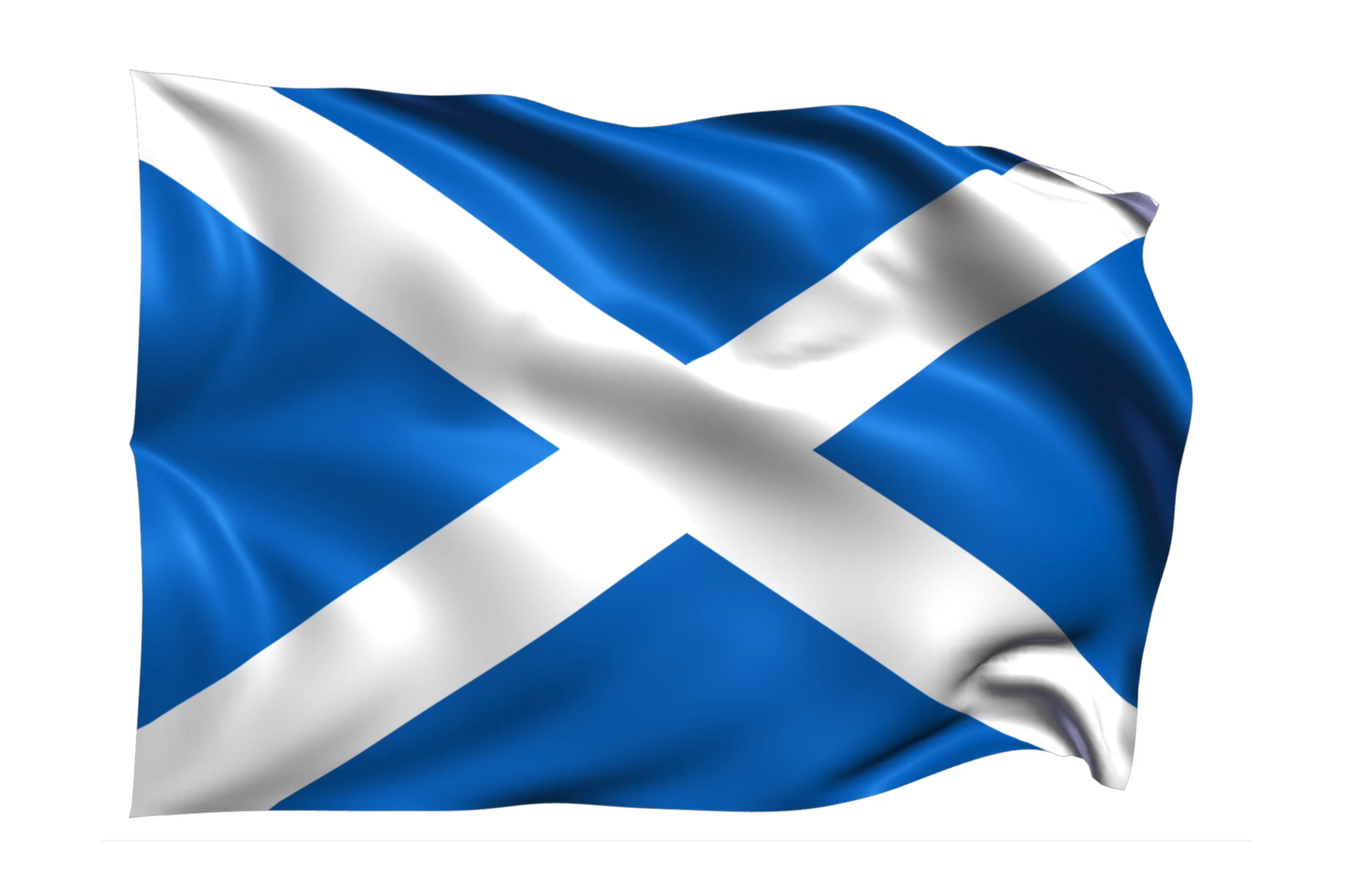The Scotland flag is one of the most iconic national symbols in the world, representing centuries of history, tradition, and cultural heritage. Known as the "Saltire," this flag has deep roots in Scottish identity and is an important emblem of national pride. In this article, we will explore the origins, significance, and various aspects of the Scotland flag, providing a detailed understanding of its role in Scottish history and modern society.
The Scotland flag is not just a piece of cloth; it is a symbol of unity, resilience, and identity for the people of Scotland. Its striking blue and white design has made it instantly recognizable around the globe. Understanding the history and meaning behind the flag can provide valuable insights into the rich tapestry of Scottish culture and history.
This article aims to delve deep into the world of the Scotland flag, covering its historical background, symbolism, cultural importance, and its place in contemporary Scottish society. Whether you're a history enthusiast, a traveler exploring Scotland, or simply curious about national symbols, this guide will offer comprehensive information on the Scotland flag.
Read also:Game Of Thrones Chaplin A Comprehensive Guide To The Iconic Series
Table of Contents
- The History of the Scotland Flag
- Symbolism of the Scotland Flag
- Design and Colors of the Scotland Flag
- Proper Usage of the Scotland Flag
- Cultural Significance of the Scotland Flag
- Legal Aspects of the Scotland Flag
- Comparison with Other Flags
- Traditions and Ceremonies Involving the Scotland Flag
- Modern Uses of the Scotland Flag
- Conclusion
The History of the Scotland Flag
The Scotland flag, also known as the Saltire, has a fascinating history that dates back to the early Middle Ages. The flag is believed to have been inspired by the legend of Saint Andrew, the patron saint of Scotland, who was crucified on an X-shaped cross. This design became a powerful symbol of Christianity and Scottish identity.
Origins of the Saltire
According to historical records, the Saltire was first used as a national symbol in the 12th century. It is one of the oldest national flags in the world, with its design remaining largely unchanged over the centuries. The flag's blue background and white cross are said to represent the sky and clouds, reflecting Scotland's natural beauty.
Some historians suggest that the Saltire may have been influenced by early Christian symbols, while others point to its use in medieval heraldry. Regardless of its origins, the Scotland flag has become a lasting symbol of Scottish pride and heritage.
Symbolism of the Scotland Flag
The Scotland flag is rich in symbolism, representing the values and ideals of the Scottish people. Each element of the flag carries deep meaning and significance.
Key Symbolic Elements
- Saint Andrew's Cross: The X-shaped cross honors Saint Andrew, the patron saint of Scotland, and symbolizes sacrifice and faith.
- Blue Background: The blue field represents the sky and the sea, reflecting Scotland's strong ties to nature.
- White Cross: The white color symbolizes purity, peace, and the clouds that grace Scotland's landscapes.
Together, these elements create a powerful visual representation of Scottish identity and values.
Read also:Cerritos Mall Black Friday Hours Your Ultimate Guide To Shopping
Design and Colors of the Scotland Flag
The design of the Scotland flag is simple yet striking, featuring a blue field with a white diagonal cross. This design adheres to strict heraldic standards, ensuring consistency and authenticity.
Official Specifications
The official dimensions and colors of the Scotland flag are as follows:
- Proportions: 3:5 (width to length ratio)
- Blue Color: Pantone 300 (a deep navy blue)
- White Color: Pantone White (pure white)
These specifications ensure that the flag maintains its integrity and visual appeal, whether flown on official occasions or displayed in everyday settings.
Proper Usage of the Scotland Flag
The Scotland flag is governed by specific rules and protocols regarding its display and usage. These guidelines ensure that the flag is treated with respect and dignity.
Etiquette and Protocol
- The Scotland flag should always be flown on a separate pole from other flags.
- It should never touch the ground or be used as a decoration or clothing.
- When flown with other national flags, it should be given equal prominence and flown at the same height.
Following these protocols demonstrates respect for the flag and the values it represents.
Cultural Significance of the Scotland Flag
The Scotland flag plays a vital role in Scottish culture, serving as a unifying symbol for the nation. It appears in various cultural events, celebrations, and traditions, reinforcing its importance in Scottish society.
Role in Scottish Festivals
During events such as the Highland Games, Hogmanay, and Burns Night, the Scotland flag is prominently displayed, celebrating the country's rich cultural heritage. It serves as a reminder of Scotland's history and the values that define its people.
Legal Aspects of the Scotland Flag
The use and protection of the Scotland flag are governed by specific laws and regulations. These legal frameworks ensure that the flag is treated with respect and is not misused or disrespected.
Flag Acts and Legislation
Under Scottish law, the Scotland flag is protected from unauthorized modifications or disrespectful use. Individuals and organizations are required to adhere to these regulations when displaying or reproducing the flag.
Violations of these laws can result in penalties, underscoring the importance of respecting the national emblem.
Comparison with Other Flags
The Scotland flag shares similarities with other national flags, particularly those featuring crosses. However, its unique design and historical significance set it apart from other flags.
Similarities and Differences
- The Scotland flag resembles the flags of Norway and Sweden, which also feature crosses.
- Unlike these flags, the Scotland flag uses a diagonal cross, making it distinct and easily recognizable.
- Its deep blue color and simple design further distinguish it from other national flags.
These comparisons highlight the uniqueness of the Scotland flag and its place among the world's most iconic national emblems.
Traditions and Ceremonies Involving the Scotland Flag
The Scotland flag is an integral part of many Scottish traditions and ceremonies, reflecting its importance in national life. From official state functions to local community events, the flag plays a central role in celebrating Scottish heritage.
Key Ceremonial Uses
- Investiture Ceremonies: The flag is flown during ceremonies honoring Scottish achievements and contributions.
- Memorial Services: It is used to pay tribute to fallen heroes and those who have served Scotland with distinction.
- State Visits: The Scotland flag is prominently displayed during visits by foreign dignitaries and heads of state.
These traditions reinforce the flag's role as a symbol of national unity and pride.
Modern Uses of the Scotland Flag
In addition to its traditional roles, the Scotland flag has found new applications in modern society. From branding and marketing to digital media, the flag continues to inspire and influence contemporary culture.
Contemporary Applications
- Branding: Companies and organizations incorporate the Scotland flag into their branding to emphasize Scottish heritage and quality.
- Art and Design: Artists and designers use the flag's elements in creative works, celebrating its aesthetic appeal and cultural significance.
- Social Media: The flag is frequently shared on social media platforms, connecting people around the world to Scottish culture and identity.
These modern uses demonstrate the enduring relevance and adaptability of the Scotland flag in today's world.
Conclusion
The Scotland flag is much more than a national emblem; it is a powerful symbol of Scottish identity, history, and values. From its ancient origins to its modern-day applications, the flag continues to inspire and unite the people of Scotland and those who appreciate its rich cultural heritage.
We encourage readers to explore the Scotland flag further, whether through visiting historical sites, attending cultural events, or simply learning more about its significance. Share your thoughts and experiences in the comments below, and don't forget to check out other articles on our site for more insights into Scottish culture and history.
Together, let's celebrate the enduring legacy of the Scotland flag and its role in shaping the nation's identity for generations to come.



